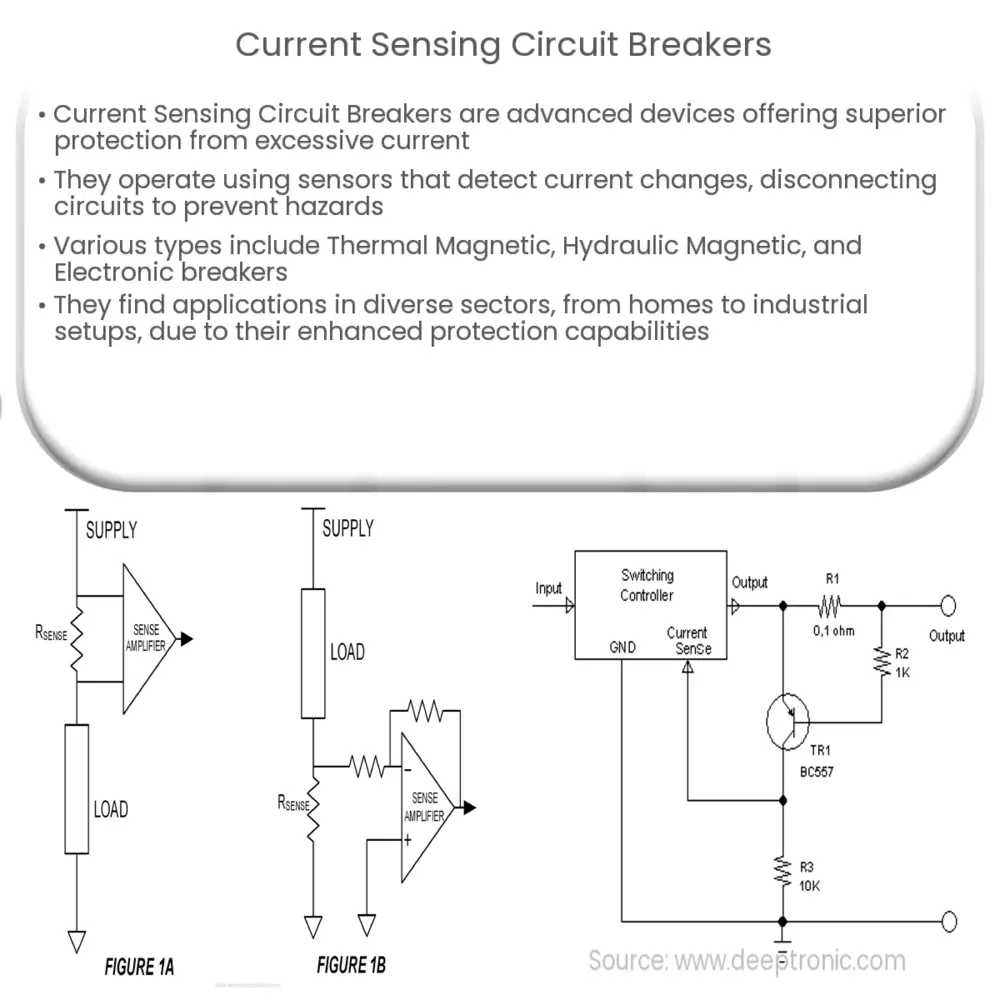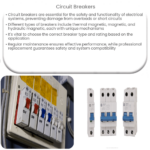Explore the functionality, types, applications, benefits, and future of Current Sensing Circuit Breakers in our comprehensive guide.

Introduction to Current Sensing Circuit Breakers
A Current Sensing Circuit Breaker is an advanced technology in the electrical circuit system designed to protect electrical circuits from damage caused by excess current flow. These devices are a step up from traditional circuit breakers in their ability to detect and stop dangerous current levels with high precision.
Working Principle of Current Sensing Circuit Breakers
Current Sensing Circuit Breakers incorporate a unique functionality compared to standard circuit breakers. Their design enables them to sense the current level in an electrical circuit and then disconnect the electrical load when the current exceeds a specific threshold.
These circuit breakers utilise a current sensor in their architecture, which detects changes in the current flow. Once the current exceeds the predetermined limit, the sensor sends a signal to the breaker mechanism. The breaker then disconnects the circuit, protecting electrical devices and preventing potential fires or electrical hazards.
Types of Current Sensing Circuit Breakers
- Thermal Magnetic Breakers: The most commonly used type, they operate using a bimetallic strip that bends when heated by current, triggering the breaker to interrupt the circuit.
- Hydraulic Magnetic Breakers: These function with a magnetic solenoid, which gets influenced by the level of current. Excess current intensifies the magnetic field, causing the solenoid to activate the breaker mechanism.
- Electronic Circuit Breakers: The most technologically advanced, these devices employ digital sensors and microcontrollers to precisely measure the current and activate the breaker when necessary.
Applications of Current Sensing Circuit Breakers
Current Sensing Circuit Breakers find applications in various sectors due to their ability to offer enhanced protection against overcurrent situations. Their usage spans from residential houses and commercial buildings to industrial applications and power generation stations. With the surge in the demand for smart devices, the adoption of these breakers in smart homes and Internet of Things (IoT) based systems has seen a significant increase.
Benefits of Current Sensing Circuit Breakers
Current Sensing Circuit Breakers provide numerous advantages over traditional circuit breakers. They deliver enhanced precision in detecting overcurrent situations, ensure better safety by preventing electrical hazards, and offer increased reliability and durability. Furthermore, certain models provide remote monitoring capabilities, facilitating better control and maintenance of electrical systems.
The Future of Current Sensing Circuit Breakers
With rapid advancements in technology, Current Sensing Circuit Breakers continue to evolve, incorporating more sophisticated features and providing even more precise and responsive protection. The development of AI-based predictive maintenance models will likely see integration into these systems, providing another leap forward in ensuring electrical safety.
Challenges and Limitations
Despite the benefits and advancements, Current Sensing Circuit Breakers are not without their limitations. Firstly, they are more expensive than traditional breakers, which may limit their adoption, particularly in cost-sensitive applications. Furthermore, the complexity of these devices may require more sophisticated maintenance and repair strategies. There may also be challenges in integrating these devices into existing systems without substantial changes to the infrastructure.
Regulations and Standards
Given the crucial role of circuit breakers in electrical safety, their design and manufacture are subject to rigorous standards and regulations. In many regions, Current Sensing Circuit Breakers must comply with specific safety and performance standards set by regulatory bodies. Some of the relevant standards include those established by the International Electrotechnical Commission (IEC), Underwriters Laboratories (UL), and the European Union’s CE marking. These regulations ensure the safety and reliability of the circuit breakers.
Choosing the Right Current Sensing Circuit Breaker
When choosing a Current Sensing Circuit Breaker, several factors need to be taken into consideration. These include the expected load, the type of application, the maximum fault current that can occur, and the environmental conditions. Additionally, compatibility with existing systems, ease of installation, and the need for remote monitoring or control are also crucial factors to consider.
Conclusion
In conclusion, Current Sensing Circuit Breakers represent a significant step forward in electrical safety. They provide enhanced protection against overcurrent situations, improved precision, and additional features like remote monitoring. Despite the challenges in cost and complexity, the advantages they offer are driving their increased adoption in various sectors. With ongoing technological advancements, these devices will continue to evolve, contributing to safer and more efficient electrical systems. As the demand for electrical safety increases and technology continues to advance, Current Sensing Circuit Breakers will play a pivotal role in shaping the future of electrical protection systems.



